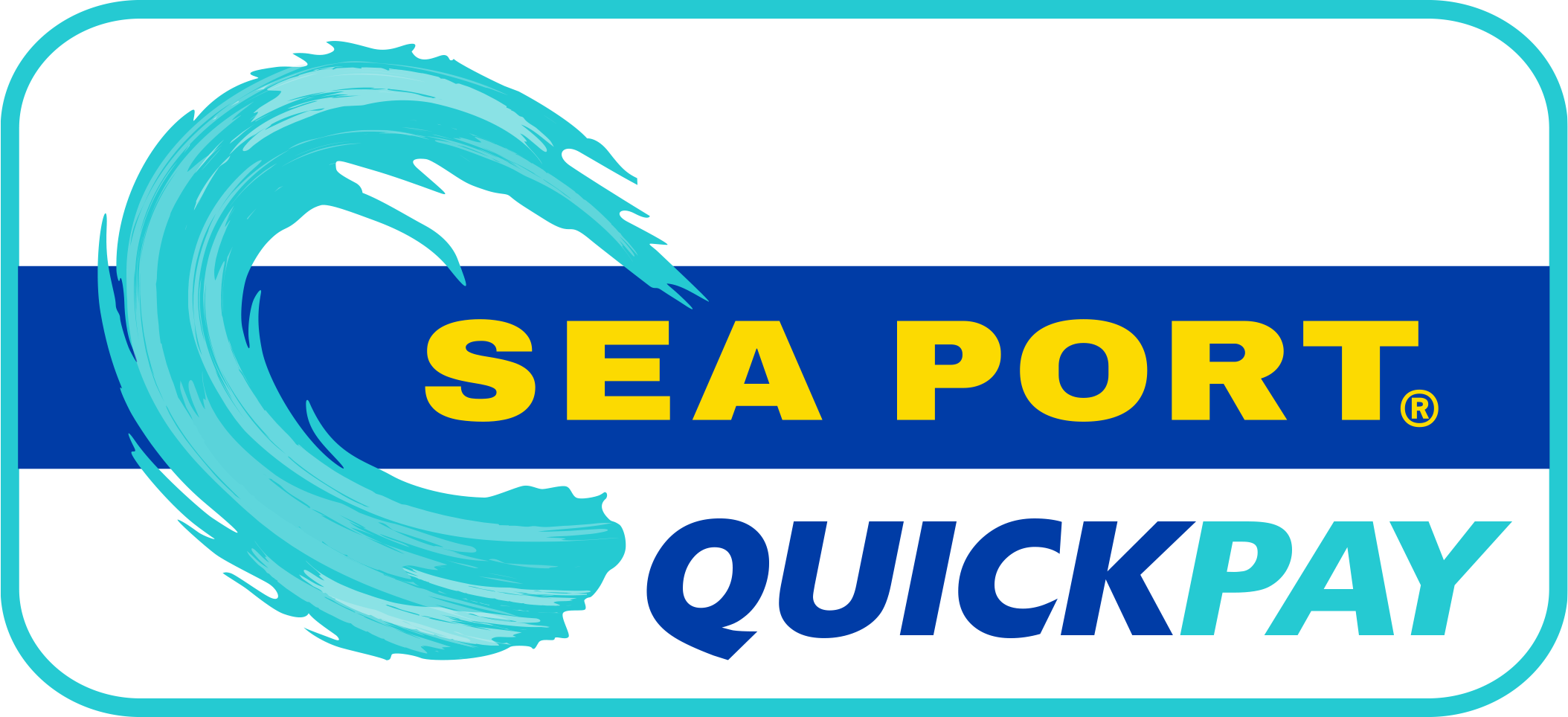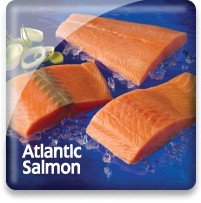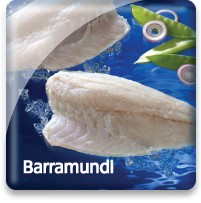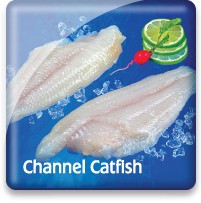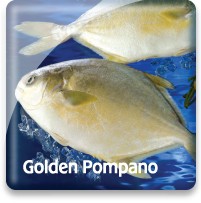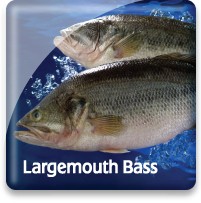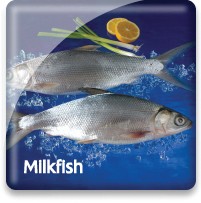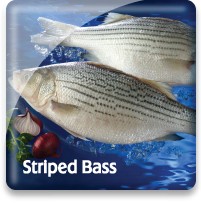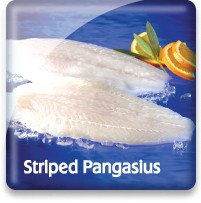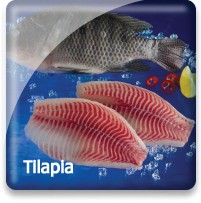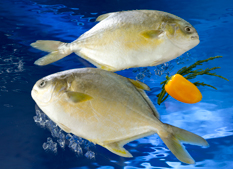
Golden Pompano

Market Name: Eating QualitiesGolden Pompano is considered a premium fish. The fat content is moderate, which contributes to the mild, succulent-tasting flesh. The finely textured meat ranges white to off-white and the taste is almost sweet. Pompano is typically prepared baked, broiled, grilled or pan-fried.
Pompano do not have teeth.
|
Description & CharacteristicsSea Port imports the Golden Pompano. There are several fish species of Pompano in the genera Trachinotus that are marketed as Pompano. The name Pompano has long been used broadly to refer to many different species within this large family of fish called jacks (Carangidae). Pompano became popular in the United States primarily because of the domestic sport and commercial fishery along the coast of Florida for the Pompano species Trachinotus carolinus. This species of Pompano is the most expensive and preferred due to its wonderful flavor, texture and fat content and is highly valued as a wonderful delicacy. The farm raised counterpart to this wild caught species is Sea Port's Golden Pompano (Trachinotus auratus) that is produced by farms in China and is proudly featured by Sea Port in order to provide our U.S. customers with an equal quality of Pompano on a consistent supply basis and at competitive prices compared to the domestically wild caught Pompano which is typically always very expensive and in short supply.While China is currently the largest farm producer of Golden Pompano, other S.E. Asian countries are rapidly expanding their Golden Pompano farming to compete with China. Sea Port will watch this ongoing development and react accordingly to bring our customers the highest quality and most competitively priced Golden Pompano offered in the world marketplace. Golden Pompano are produced in floating marine cages and reach marketable sizes of between 1-2 pounds and can reach 18-20 inches in length within 6 months.Domestically, local caught Florida Pompano that are larger than 2 pounds are filleted while smaller fish are usually offered in whole cleaned pan ready form. Sea Port's imported Golden Pompano helps fill the growing demand for these smaller 1-2# sized whole Pompano when the domestic fresh Florida Pompano is unavailable and/or most often too high in price. There has, and continues to be, significant restrictions on both the U.S. commercial and recreational harvests of Pompano in order achieve the fishery's maximum sustainable yield (MSY). Sea Port’s imported farmed raised Golden Pompano assists in lessening the pressure on this popular U.S. wild fishery and allowing more customers to experience this wonderfully tasting fish at attractive prices without worries of negatively impacting our local Florida wild caught stocks. Responsibly consuming farm raised Golden Pompano fits Sea Port's Go Blue! initiative to improve our personal health, our environment, and seafood resource sustainability. Enjoy! Other Resources |
Handling Instructions for Golden Pompano
Our whole frozen pompano must be stored at or below 0°F (-18°C) and then thawed properly when ready to cook. The frozen shelf life is 18 months. Links to proper seafood handling instructions: NOAA - Fish Watch: Handling Seafood and A Consumer Guide to Safe Seafood Handling.
Thawing Golden Pompano
The whole IQF pompano should be placed in a tight fitting plastic bag or covered container and placed under refrigeration between 33 and 39°F for 12-24 hours until thawed. Gutting the whole fish once the gut cavity has sufficiently thawed is recommended even if the body of the fish is still mostly frozen. The whole fish can then be allowed to further thaw in the refrigerator.
Important Instructions for Golden Pompano
Upon thawing, whole fish should be gutted if not already done so when the gut cavity was partially thawed earlier in the thawing process. Once totally thawed and cleaned the fish should be cooked immediately for the best quality results. Fish not immediately consumed should be held under proper refrigeration and completely consumed within 1-2 days.
The Federal Food, Drug and Cosmetic Act now requires that all foods that are not raw agricultural commodities and that contain a major food allergen be labeled to clearly identify the name of the food source form which the allergen is derived. (21 CFR U.S.C. 343(w)(1)). The act defines eight foods, and any ingredients derived from these foods as major food allergens: Fish, Crustacean Shellfish, Milk, Eggs, Tree Nuts, Peanuts, Wheat & Soybeans. The name of the food source that must be listed on the label for fish or crustacean shellfish must be the specific type of fish or crustacean shellfish. The market names of species of fish and crustacean shellfish should be used to identify the food source of these two major food allergens. If you intend to re-pack these seafood products, be sure the allergen is declared in either one of two ways:
1) Within the list of ingredients
or
2) In a separate “Contains” statement immediately after or adjacent to the list of ingredients.
Consult the Fish and Fishery Products Hazards and Controls Guidance, Fourth Edition, Chapter 19 for more detailed information on the labeling of food allergens.
Cooking Tips
Pompano can be prepared using a wide variety of cooking methods. Link to cooking tips and recipes.
China
With more than 1.3 billion people, China is today the world’s most populous country. With a growing economy fueling an appetite for seafood, China has begun importing seafood for in-country consumption, as well as exporting a great deal of its production. In fact, since 2002, China has continued to export more fish and fishery products than any other country in the world, with Japan, the United States, and the Republic of Korea as its main export markets.
Chinese distant water fishing activities started in 1985 when China gained access to new fishing grounds through agreements with foreign countries. China operates vessels in West Africa, the North Pacific, and tuna longline vessels in the South Pacific. In addition, squid are harvested in the Japan Sea, the South Atlantic, and the North Pacific under Chinese-flagged vessels.
Carp are also commercially important, as are bream, shad, eel, catfish, rainbow trout, salmon, whitebait, mullet, mandarin fish, perch, sturgeon, and murrel (snakehead). Commercial shellfish include Saltwater & freshwater shrimp, river crabs, and mollusks such as mussels, clams, oysters, and freshwater snails.
With one-fifth of the world’s population, and an official government policy to promote aquaculture, China has today become an aquaculture powerhouse, now producing more than two-thirds of the world’s aquaculture species. Fish and shellfish are grown in freshwater and saltwater environments.
Go Blue! Seafood Sustainability Spectrum*Click here for an explanation of our Sustainability Spectrum 
Sustainability AssessmentSea Port sources Golden Pompano from China. Golden Pompano is native to the Atlantic, Indian, and Pacific oceans. Sea Port’s Golden Pompano is supplied by farms in isolated, offshore areas using advanced net/pen and cage technology. In general, environmental risks with pompano include a heavy use of marine resources (such as wild fish) in feed, pollution, chemical and antibiotic usage, disease, and escapes. Environmental risks are greater in regions with less effective regulatory controls and enforcement. In these areas, farms may not use best practices and are therefore less likely minimize their impact on the environment.
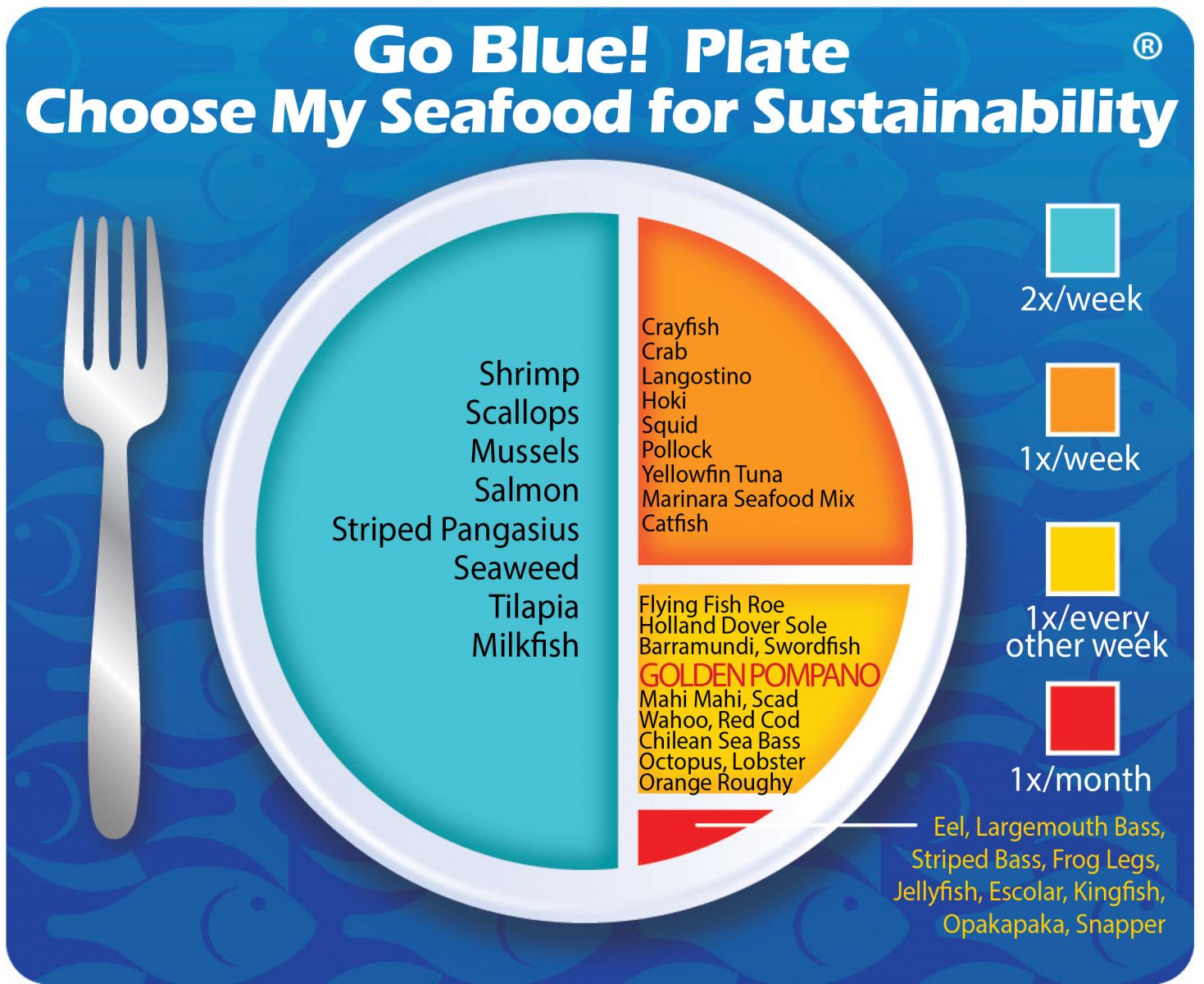
Environmental Impact: Moderately High to HighPompano is a net user of marine resources, using more fish in feed than is produced by the farm. Other impacts include water pollution, sea bed damage from waste, chemical and antibiotic usage, disease, and escapes.
Sustainability Improvements NeededPompano feed formulation and efficiency of use must be improved. Better practices are required on farms to reduce impacts, along with more effective regulations and increased enforcement. Greater controls limiting the cumulative impacts of many farms in a given area should be introduced, such as the development of coordinated area management practices. Controls, such as the use of sterile fish, could be used with Pompano to reduce the impact of escaped fish.
Actions that Sea Port is UndertakingSea Port is encouraged by the development of offshore net/pen & cage aquaculture (mariculture) for pompano where moveable cages and improved feed are pushing this type of ocean farming to be more environmentally sustainable. Sea Port sources primarily from these types of operations in China. Sea Port believes that, in aggregate, choosing from a diverse variety of seafood is better for sustaining the world’s seafood resources and farmed Golden Pompano should be a part of this variety.
We created the sustainability assessments for each of our seafood items in order to reveal the existing and potential environmental impacts and risks that are associated with producing them for human consumption. This allowed us to establish the starting position for each of our seafood items along our progressive Go Blue! Seafood Sustainability Spectrum®. These assessments are only a single snapshot in time and because of this, we will continue to assess and update the critical sustainability needs associated with our supply sources and issue updates to the Go Blue! Seafood Sustainability Spectrum® as needed. There is a growing global awareness for the need to assure the sustainability of farmed and wild caught seafood and because of this; all around the world positive changes are rapidly occurring at all levels of the seafood supply chain. We will continue to spread this growing awareness and work with our many industry partners to improve the sustainability of all seafood, which we believe is the ideal protein of choice to feed an ever growing world population. Our Go Blue! Seafood Sustainability Spectrum® serves as our compass and yardstick as we strive to move all our products forward to becoming more sustainable. Please join us in this committed quest and Catch Our Wave® to sustainability by choosing a diverse variety of responsibly produced seafood as part of your diet.
|

